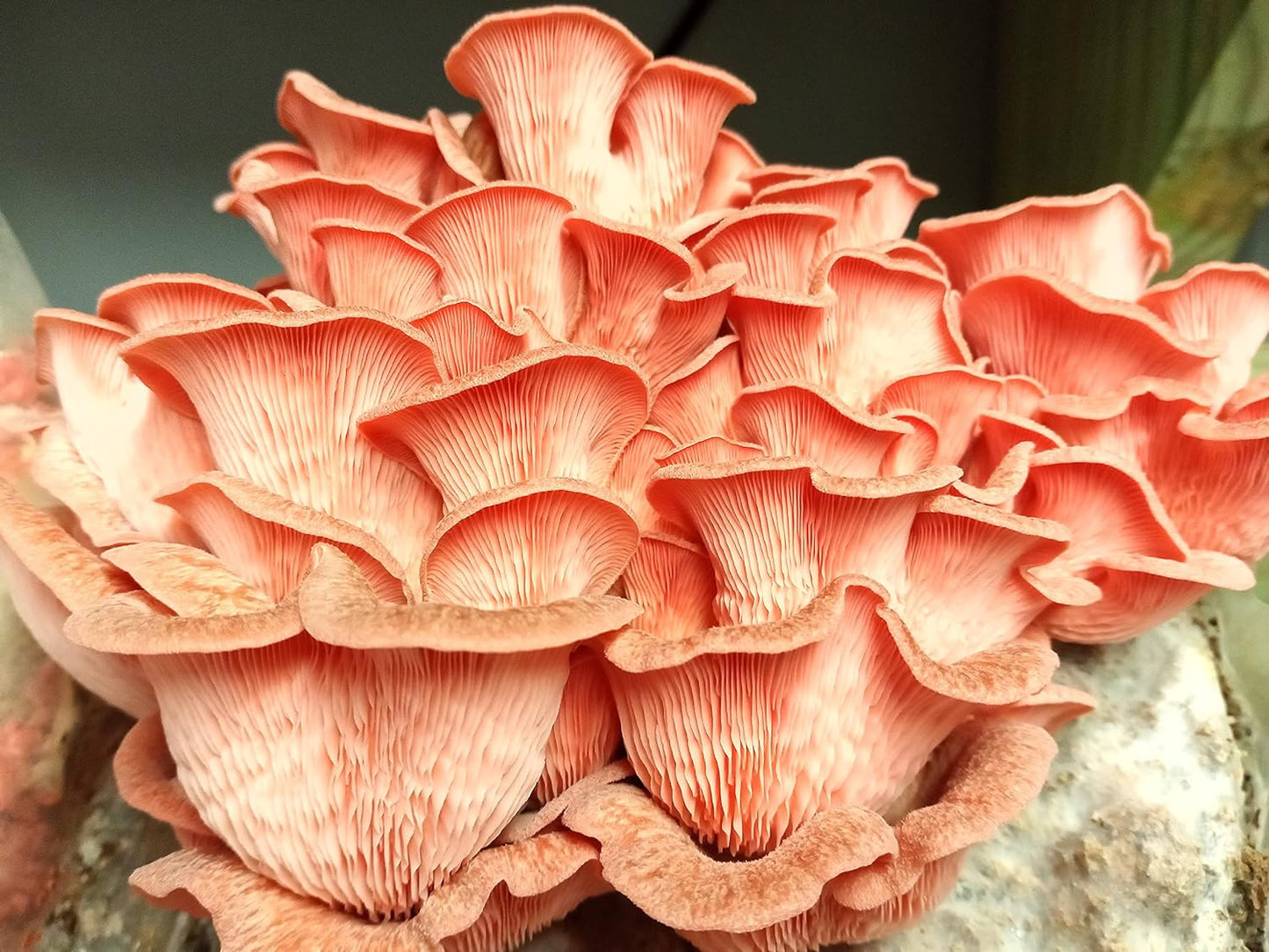Does not apply
100 Pink Oyster Mushroom Plug Spawn to Grow Gourmet Medicinal Mushrooms at Home
100 Pink Oyster Mushroom Plug Spawn to Grow Gourmet Medicinal Mushrooms at Home
Couldn't load pickup availability
- Grow your own delicious and nutritious gourmet and medicinal mushrooms at home.
- Save on costs compared to grocery store or farmer's market.
- Engage your children and other family members in a project that will fascinate and entertain.
- Makes a unique gift for friends or family. Instructions are included in this listing and provided with the product.
- The easiest way to grow mushrooms, no special lab equipment needed. Just freshly cut hardwood, a drill, and a hammer.
Easily grow your own Pink Oyster Mushroom mushrooms for years to come. Pink Oyster Mushroom Plug Spawn is wood dowels inoculated with the Pink Oyster Mushroom mushroom species mycelium, and used to grow Pink Oyster Mushroom mushrooms on freshly cut logs or stumps. You will specifically need hardwood logs such as Alder, Ash, Birch, Bitternut, Cherry, Chestnut, Hophornbeam, Ironwood, Maple, Oak, Pecan, Sweet gum, Sycamore, Tulip poplar, Walnut, Willow and others. Pink Oyster Mushroom mushrooms do not grow on conifers. Simply drill 5/16" holes 1" deep to hammer the Pink Oyster Mushroom plugs into. The holes should be drilled right before plugging them, and spaced about 4" apart. Logs should be roughly 6 inches in diameter and four feet long. They need to be freshly cut, or at least cut within the past 20 days. Avoid using logs with missing or split bark, try to find unpenetrated logs, except on the sides they were cut. Pink Oyster Mushroom Plug spawn can also be used to grow mushrooms on live trees, but should only be done strategically down branch where pruning is planned later. Our Pink Oyster Mushroom plug spawn is made from hardwood fluted or spiral dowels. Pleurotus djamor, commonly known as the pink oyster mushroom, is a species of fungus in the family Pleurotaceae. It was originally named Agaricus djamor by the German-born botanist Georg Eberhard Rumphius and sanctioned under that name by Elias Magnus Fries in 1821. It was known by many different names before being transferred to the genus Pleurotus by Karel Bernard Boedijn in 1959.
Listed with ExportYourStore.com
Materials
Materials
Shipping & Returns
Shipping & Returns
Dimensions
Dimensions
Care Instructions
Care Instructions












Image with text
Pair text with an image to focus on your chosen product, collection, or blog post. Add details on availability, style, or even provide a review.
-
Free Shipping
Pair text with an image to focus on your chosen product, collection, or blog post. Add details on availability, style, or even provide a review.
-
Hassle-Free Exchanges
Pair text with an image to focus on your chosen product, collection, or blog post. Add details on availability, style, or even provide a review.












